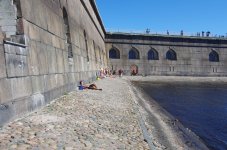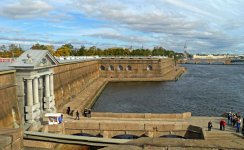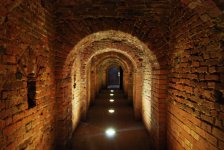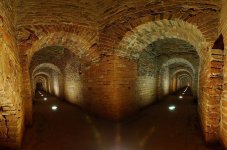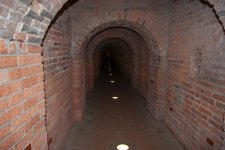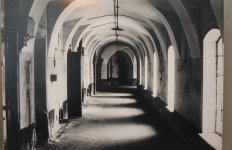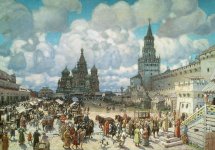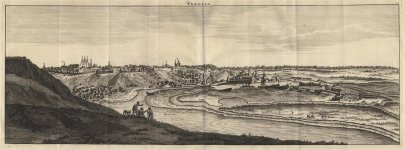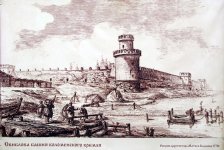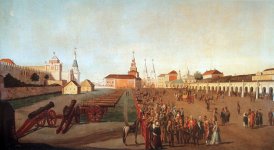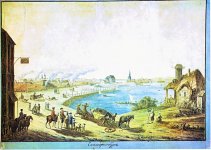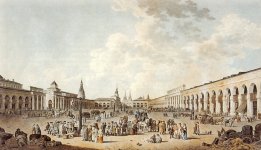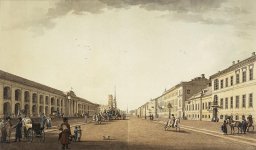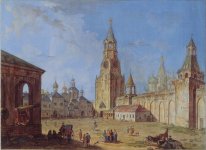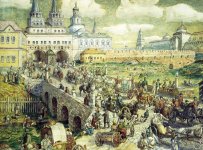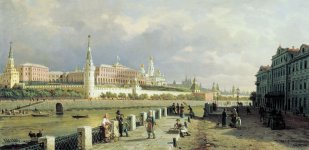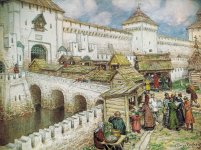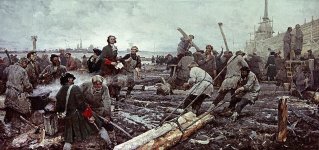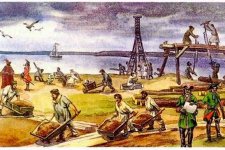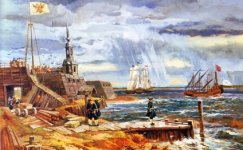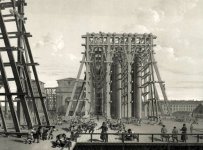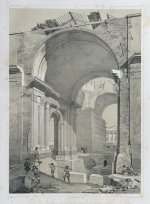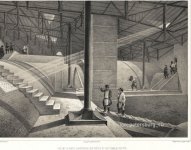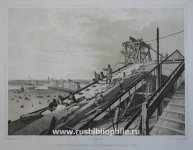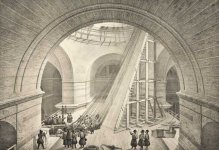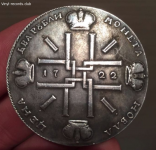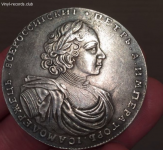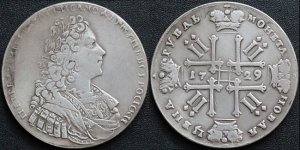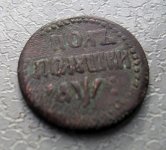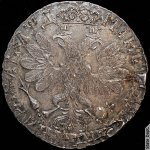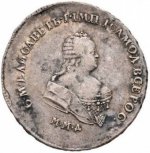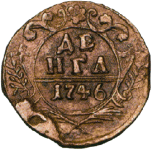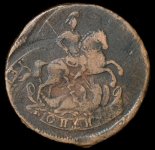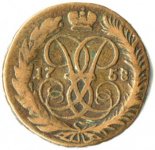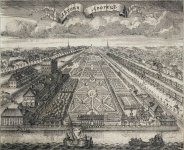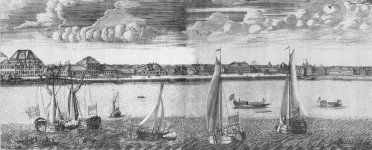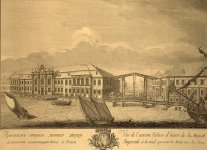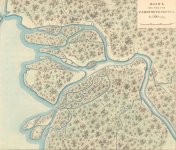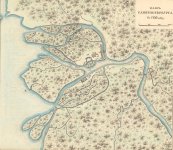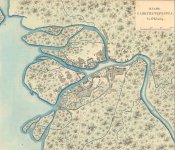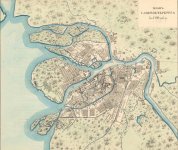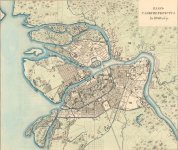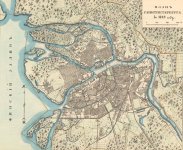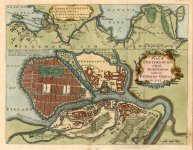This is like a variation of the same story, no matter where you look. Now it is the Russian City of Saint Petersburg. It actually has a pretty cool legend about how it was founded, and how it was built.
"On 16 May 1703, while looking over sparse marshlands near the mouth of the Baltic Sea that he had taken from the Swedes, Tsar Peter the Great cut two strips of turf from Hare’s Island on the Neva river, laid them in a cross and declared: “Let there be a city here.” As he spoke, an eagle appeared overhead in an auspicious omen.

Or at least that’s the myth of St Petersburg’s founding. In reality, Peter the Great wasn’t even there, and most likely neither was the eagle. It was a group of soldiers under the command of his friend, General Alexander Menshikov, who began building what would become the Peter and Paul Fortress on Hare’s Island in May 1703. The tsar only arrived the following month.
But although untrue, this myth perfectly encapsulates the origins of St Petersburg. Built on an inhospitable swamp at the cost of thousands of lives, it was brought into being through the iron will of Peter, who needed a warm-water port and a fortress against the Swedes. Moreover, it was to be his “window to Europe”: a new capital where Peter’s western-inspired reforms of the military, bureaucracy and national culture would take hold." - St Petersburg
In May of 1703, there supposedly was nothing but a swamp where the great City of Saint Petersburg was to stand. The official version states, "The city was built by conscripted peasants from all over Russia; a number of Swedish prisoners of war were also involved in some years under the supervision of Alexander Menshikov. Tens of thousands of serfs died building the city."

Actually, I think walls only will suffice.
Well, and some tunnels are not gona hurt the cause here.
Of course we have a bunch of buildings, and a cathedral left. Those you can see here: Peter and Paul Fortress.

KD Opinion: Given the 13 year time frame, I do not believe it was possible to construct a map full of brick and mortar buildings (yes, those were exactly that). Below I will try to present my opinion as to why.
Note: First of all, there is no bashing on the 18th century Russia below. I could draw the exact same parallel to just about any other country. It's just this time we are talking about Russian Saint Petersburg.
I think that art, equipment, and coins are good indicators of the human abilities within a specific time frame. The life gets reflected through the eyes of the artist. Tools and equipment give an idea of what they are capable off. And the quality of the coins, being that there was no television, internet, etc, are also meant to reflect on the governmental identity.
Now let us see what Russian art has to offer as an insight into what everything was like in the 18th century: people, equipment, road condition, etc. The images will pertain to the 18th, and occasionally early 19th centuries. I understand that 1703 is closer to the 17th century in spirit but some benefit of a doubt would not hurt here.
To make it perfectly clear, I have no idea how those people could have built some of the structures you can see in the below paintings.
I think the art above says it all. Modes of transportation are normal for the time frame. Clothing looks normal. The only advanced thing in the paintings is the architecture. Science says they built all that, but did they really?
What could the construction process look like? Would we see any advanced techniques in there allowing the building process to be conducted at at great speed? I was not able to find too many images, but here is what we have.
Nothing really special we have, just something you would expect from the early 18th century. All attempts to find any paintings of the building construction for the 18th century Russia were unsuccessful.
But we can look into some of the claimed construction techniques used 100 years later, in 1820s. I've heard that Russian alternate history gurus took this construction process apart, and called BS on just about everything. If any Russian readers would like to fill us in, on what's going on there, please do so.
With the above 19th century technique it would probably take 200 years to build what was achieved between 1703 and 1716 in Saint Petersburg. I also do not think the technique matches the structures. Appears we did not make it too far from the claimed Ancient Egyptian technique.

Tools: Well, the woodworking tools do not really pertain to what they built. Yet, woodworking were the only tools I was able to find in google.

Coins: Here is where we run into two distinctive quality levels. This could possibly be attributed to the Tartarian heritage, but there is enough speculation for one article. I will just say, that this is not time damage related issue. According to my Russian acquaintance, this is an ongoing topic of discussion in Russia. Apparently some of the coins (same time frame) do not match to the Kings (Tsars), have unexplanable units of currency, and greatly differ in quality.
To even get to the point where some sort of construction would be possible, they would have to get rid of the swamps, and marshlands. Then it would be the turn of building up infrastructure (roads, bridges, docks, brick factories, etc). In 1703...
A little summary: Was it possible for Russian people of the early 18th century to build all those structures we can see on the 1716 map. Sure was, but than there would have to be something in our history we are not being told about.
I personally think the City was already there. Older maps suggest that with so many existing cities, there was no reason to build a brand new one in the middle of some swamp. Building a "window to Europe" with so many existing "windows" ... sure...
"On 16 May 1703, while looking over sparse marshlands near the mouth of the Baltic Sea that he had taken from the Swedes, Tsar Peter the Great cut two strips of turf from Hare’s Island on the Neva river, laid them in a cross and declared: “Let there be a city here.” As he spoke, an eagle appeared overhead in an auspicious omen.
Or at least that’s the myth of St Petersburg’s founding. In reality, Peter the Great wasn’t even there, and most likely neither was the eagle. It was a group of soldiers under the command of his friend, General Alexander Menshikov, who began building what would become the Peter and Paul Fortress on Hare’s Island in May 1703. The tsar only arrived the following month.
But although untrue, this myth perfectly encapsulates the origins of St Petersburg. Built on an inhospitable swamp at the cost of thousands of lives, it was brought into being through the iron will of Peter, who needed a warm-water port and a fortress against the Swedes. Moreover, it was to be his “window to Europe”: a new capital where Peter’s western-inspired reforms of the military, bureaucracy and national culture would take hold." - St Petersburg
In May of 1703, there supposedly was nothing but a swamp where the great City of Saint Petersburg was to stand. The official version states, "The city was built by conscripted peasants from all over Russia; a number of Swedish prisoners of war were also involved in some years under the supervision of Alexander Menshikov. Tens of thousands of serfs died building the city."
Here are the alleged 1698 maps of the Saint Petersburg area.
(swamp with nothing there)


Saint Petersburg map: 1716, 1717 and 1720
In 1703 Peter the Great said, "Let there be a city here."
13 years later....



Peter and Paul Fortress
To put this 13 year achievement into perspective, I will show you this one complex called Peter and "Paul Fortress". On the map it looks like an insignificant star shaped structure.(swamp with nothing there)
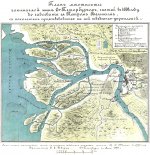
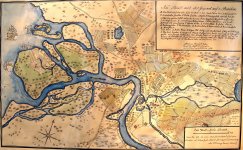
Saint Petersburg map: 1716, 1717 and 1720
In 1703 Peter the Great said, "Let there be a city here."
13 years later....
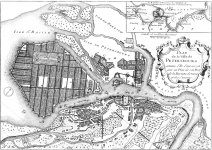
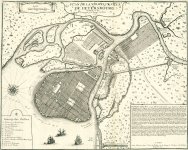
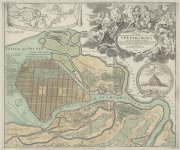
Peter and Paul Fortress
Well, and some tunnels are not gona hurt the cause here.
Of course we have a bunch of buildings, and a cathedral left. Those you can see here: Peter and Paul Fortress.
KD Opinion: Given the 13 year time frame, I do not believe it was possible to construct a map full of brick and mortar buildings (yes, those were exactly that). Below I will try to present my opinion as to why.
Note: First of all, there is no bashing on the 18th century Russia below. I could draw the exact same parallel to just about any other country. It's just this time we are talking about Russian Saint Petersburg.
I think that art, equipment, and coins are good indicators of the human abilities within a specific time frame. The life gets reflected through the eyes of the artist. Tools and equipment give an idea of what they are capable off. And the quality of the coins, being that there was no television, internet, etc, are also meant to reflect on the governmental identity.
Now let us see what Russian art has to offer as an insight into what everything was like in the 18th century: people, equipment, road condition, etc. The images will pertain to the 18th, and occasionally early 19th centuries. I understand that 1703 is closer to the 17th century in spirit but some benefit of a doubt would not hurt here.
To make it perfectly clear, I have no idea how those people could have built some of the structures you can see in the below paintings.
I think the art above says it all. Modes of transportation are normal for the time frame. Clothing looks normal. The only advanced thing in the paintings is the architecture. Science says they built all that, but did they really?
What could the construction process look like? Would we see any advanced techniques in there allowing the building process to be conducted at at great speed? I was not able to find too many images, but here is what we have.
Nothing really special we have, just something you would expect from the early 18th century. All attempts to find any paintings of the building construction for the 18th century Russia were unsuccessful.
But we can look into some of the claimed construction techniques used 100 years later, in 1820s. I've heard that Russian alternate history gurus took this construction process apart, and called BS on just about everything. If any Russian readers would like to fill us in, on what's going on there, please do so.
With the above 19th century technique it would probably take 200 years to build what was achieved between 1703 and 1716 in Saint Petersburg. I also do not think the technique matches the structures. Appears we did not make it too far from the claimed Ancient Egyptian technique.
Tools: Well, the woodworking tools do not really pertain to what they built. Yet, woodworking were the only tools I was able to find in google.
Coins: Here is where we run into two distinctive quality levels. This could possibly be attributed to the Tartarian heritage, but there is enough speculation for one article. I will just say, that this is not time damage related issue. According to my Russian acquaintance, this is an ongoing topic of discussion in Russia. Apparently some of the coins (same time frame) do not match to the Kings (Tsars), have unexplanable units of currency, and greatly differ in quality.
Engravings
I was unable to find any paintings, but here are some of the engravings covering 1714 - 1716. Looks like they could build everything but bridges, judging by the first image.To even get to the point where some sort of construction would be possible, they would have to get rid of the swamps, and marshlands. Then it would be the turn of building up infrastructure (roads, bridges, docks, brick factories, etc). In 1703...
A little summary: Was it possible for Russian people of the early 18th century to build all those structures we can see on the 1716 map. Sure was, but than there would have to be something in our history we are not being told about.
I personally think the City was already there. Older maps suggest that with so many existing cities, there was no reason to build a brand new one in the middle of some swamp. Building a "window to Europe" with so many existing "windows" ... sure...
1570 Ortelius Map

But that leaves us with two questions:
1. What is the price of our history? ... and the meaning for that matter.
2. Who and why was faking our documents similar to the below Saint Petersburg maps, created in the19th century by the same author?
> 1700 -1849 progression.


